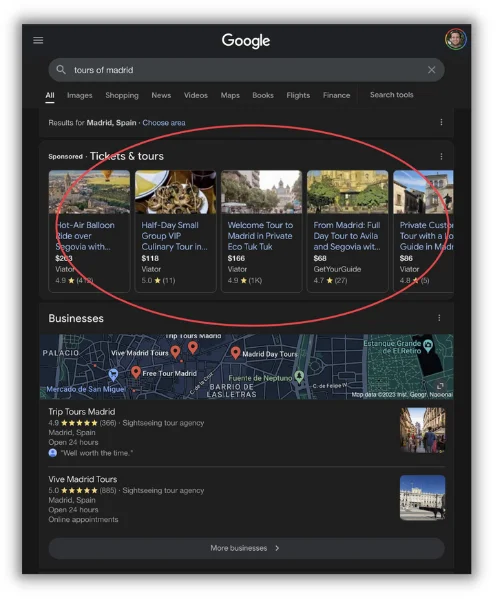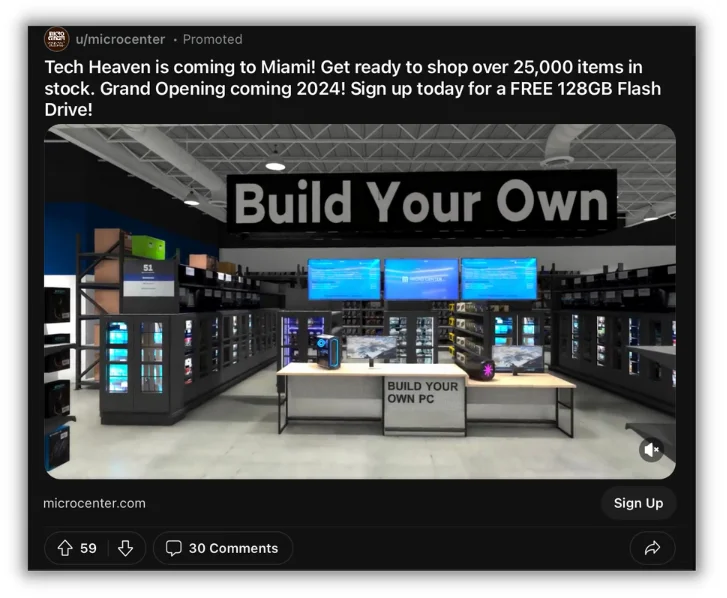Once you’ve done the hard work of creating and implementing a marketing campaign or ad, a new challenge begins: Measuring the effectiveness of that campaign or ad. You think you grasp what each metric consists of, but then you notice each platform has slightly different parameters—and it gets fuzzy.
That’s especially true for impressions and clicks. Both terms seem to muddle together, and it can be confusing when you compare them on different platforms like Google, Meta, and TikTok.
The good news is that by understanding a clear definition of impressions and clicks, learning the differences, and knowing how to improve both, you can gain a better cross-platform understanding to improve your marketing and engagement strategies.
Table of contents
- What are impressions?
- What are the benefits of impressions?
- How can you increase impressions?
- What are clicks?
- What are the benefits of clicks?
- How can you get more clicks?
What are impressions vs. clicks?
Impressions and clicks are like siblings. They have a lot in common, but they have unique characteristics and traits—filled to the brim with potential.
Whether you’re running ads or analyzing organic content, impressions and clicks offer insight to measure ROI. It’s the heart of online marketing because it offers the litmus test of how effectively you are communicating to your audience and getting results.
The online customer experience looks something like this: impression –> reach –> click –> decision.
We’ll dive deep into both impressions and clicks, discuss the benefits of each, and talk about how to increase them for your marketing strategy.
What are impressions?
Impressions are the number of times your content appears on someone’s screen. It doesn’t matter if they notice it or take action—the metric points to how many people it’s been exposed to.
Each platform may have different ways of counting because of the many different apps, formats, and online experiences involved.
Google defines impressions as “How often your ad is shown. An impression is counted each time your ad is shown on a search result page or other site on the Google Network.”
It clarifies how Google counts it:
- When an ad shows up on Google and its network
- Portions or excerpts of your original ad that Google chooses to feature
Facebook defines impressions as “the number of times any content from your Page or about your Page entered a person’s screen.”
With both platforms, impressions include content and ad exposure. But they also feature links to pages, excerpts, and various metadata— an important factor to consider when reviewing how each platform measures impressions and how to analyze the metric.

In this search, the ads shown would be considered impressions.
💡 Want a deeper look at your Google Ads performance? Try WordStream’s Google Ads Grader for actionable insights and next steps >> Get your free audit now
What are the benefits of impressions?
Impressions are a foundational layer to your marketing strategy because they give you a broad view. Since impressions measure exposure on a specific distribution channel, they should represent the largest metric and paint a picture of your overall campaign. Once you know the number of impressions, you can create benchmarks for improvement and get an overall idea of your potential.
Impressions also give businesses budget flexibility.
Most platforms provide impression estimates based on the budget you put into a campaign. To increase impressions, you can pay more based on the cost for that particular keyword, target audience, or metric factor. Similarly, if you post an organic piece of content and notice it has higher impressions than normal, you can convert it into a paid campaign.
In addition to analytical benefits, impressions also provide great top-of-mind awareness. The more target audiences see your content, the more likely they think of you—one day, leading to a purchase or action.
How can you increase impressions?
Impressions are great for measuring exposure. But what’s the next step? We want more reach (people who notice it). We can use impressions to inform our approach and adjust our strategy to better serve reach.
1. Increase your budget
When the dust settles, impressions often depend on how much you’re willing to spend. Choose the right keywords, topics, and interests relevant to your audience. You can often save costs and get more bang for your buck when you choose less competitive words to build a corner you can dominate.
2. Create contagious content
The more people share and interact with your brand, the more likely platforms will push it in their algorithms. Partner, hire, or equip creative people who can think outside the box, capture attention, and boost impressions.

This influencer promotes the bakery Chiffonated and spreads the word to her following.
3. Keep defining your target audience
Each platform has tools to help define who you want to expose your ad, brand, and offer to. Use them to connect with the right people. You can define demographics, common interests, location, devices used, and more. Once you get metrics on who’s interacting with your content, lean into what’s working, experiment, and define your audience for better results.
4. Choose platforms that your audience uses
Impressions are only as good as the audience you’re sharing content with. And you can’t force people to meet you on a platform that’s foreign to them. You need to meet them where they hang out. If your customers like to be on Facebook, focus on impressions there. Or if they like LinkedIn, improve your impressions on the platform.

In this particular case, the tech community is very active on Reddit, making this ad relevant for the audience that uses it.
5. Place content in more visible locations
Platforms, like search engines, often give you more control over where content, particularly ads, is placed. You can study which areas are performing better and getting more reach from impressions. Choose those sections or features.
🚨 Free guide: 37 Ways to Promote Your Business (Whatever Your Budget!)
What are clicks?
Clicks are the actions your audience takes when they see your content. It’s directly related to your call to action. Audience members might click on a button to visit your website or join an email list or make a purchase.
When someone clicks, your platform should have counted an impression (that they were exposed to you) and a reach (that they noticed you). Congratulations, your strategy is working, and you have users taking the first steps to convert.
What are the benefits of clicks?
Clicks are powerful because they lead to direct conversions—you’re accomplishing some of the hardest parts of marketing. You can measure your invested dollars into sales as you track customer journeys. In turn, you can identify areas for improvement based on conversion rates.
By defining your ROI, you get a better picture of your online advertising and social media engagement health. Clicks allow businesses with budgets to define the success of a project and correlate decisions with results. Before the age of internet advertising and engagement, it was much harder to justify budgets but now almost every action is measurable with “clicks” serving as a pivotal indicator for success.
How can you get more clicks?
Want to get more clicks? Follow these tips.
1. Run A/B tests for copy
It’s always a good idea to run different variations of copy. Find out which one pushes audience members to action. Continue to test and improve so you can increase clicks.

This illustration shows two drastically different website designs for HeadsUp, which serves as a broad A/B test. Once there is a clear winner, the team can do more tests with much narrow variations.
👉 Want more clicks to your site? Free guide >> 25 Incredibly Effective Ways to Increase Traffic to Your Website
2. Ensure customer intent is tied to the copy and CTA
Businesses should know whether the user wants to learn more, buy something now, or any other intent they may have on the customer journey. They can identify these types of intent by studying their customers, keyword research, and social listening (monitoring social media content and trends to better understand your audience).
If you publish an ad that targets someone who wants to diagnose their car radio issues, a call-to-action to buy a brand-new radio won’t get many clicks. Instead, since it’s the beginning of the customer journey, the ad could point to a DIY guide for troubleshooting with a conclusion to buy a premium, upgraded radio if the customer can’t fix it.

This milk brand knows exactly who they are targeting and what they want. Customers can have breakfast that will keep them full longer with half the sugar. Any diet-conscious consumer will consider this value proposition when they see the ad. If they click, it’s included in the metrics.
3. Create an effective landing page
Whether it’s for a subscription, sales page, or download, there should be a stellar landing page that can convert incoming traffic from those clicks (our ultimate goal). If you can improve your conversation rate on the landing page, each click will be more valuable and effective.

This Tampa-based food truck wants to encourage catering. Their CTA button is clear while the rest of the page gives information on where to buy and find them in person throughout the week.
Make the most of impressions and clicks
Impressions and clicks are an integral part of marketing. Whether you’re running ads or building organic content, these two metrics help assess the health of your campaign and strategy.






